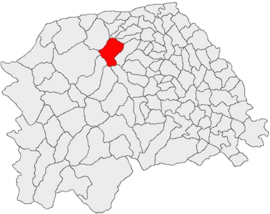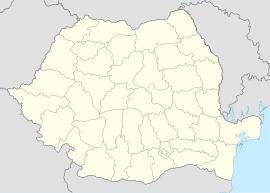Sucevița facts for kids
Quick facts for kids
Sucevița
|
||
|---|---|---|

Sucevița Monastery
|
||
|
||

Location in Suceava County
|
||
| Country | ||
| County | Suceava | |
| Population
(2011)
|
Lua error in Module:Wd at line 1,575: attempt to index field 'wikibase' (a nil value). | |
| Time zone | EET/EEST (UTC+2/+3) | |
Sucevița (which is sometimes called Suczawitza or Kloster Suczawita in German) is a small community in Suceava County, located in the northeastern part of Romania. This area is part of a historical region known as Bukovina.
The commune of Sucevița is made up of two main villages: Sucevița itself and another village called Voievodeasa (which is Fürstenthal in German).
One of the most famous landmarks in Sucevița is the Sucevița Monastery. This monastery is very special because it is part of the UNESCO World Heritage Site collection of painted churches in Moldavia. These churches are famous for their beautiful paintings on the outside walls.
Contents
Where is Sucevița Located?
Sucevița is found in the Suceava County of Romania. This county is in the historical region of Bukovina. Bukovina is known for its beautiful landscapes and rich history. The commune is in the northeastern part of Romania.
The Famous Sucevița Monastery
The Sucevița Monastery is a very important historical and cultural site. It was built a long time ago, between 1582 and 1584. The monastery is known for its amazing exterior frescoes, which are paintings on the outside walls. These paintings show scenes from the Bible and the lives of saints.
Why is the Monastery Special?
The Sucevița Monastery is part of a group of churches called the "Painted Churches of Moldavia". These churches are so unique and important that UNESCO has listed them as a World Heritage Site. This means they are protected and valued by people all over the world. The paintings tell stories and teach lessons, almost like a giant outdoor picture book.
The Monastery's History
The monastery was built by the Movilă family, who were important figures in the region. It served as a strong fortress as well as a place of worship. The walls are thick, and there are towers, which helped protect it in the past. Today, it is still an active monastery for nuns.
See also
 In Spanish: Sucevița para niños
In Spanish: Sucevița para niños



